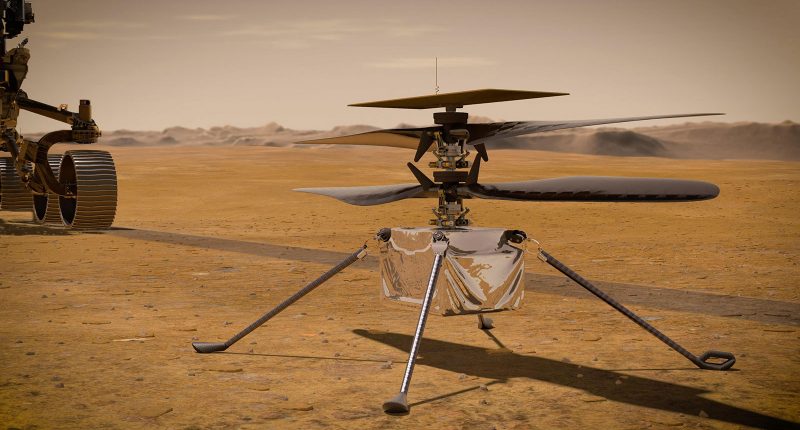A few centuries ago, taking flight was nothing but a dream for mankind. Then came the Wright Brothers and everything changed. Today, we take flights all the time, and it has become a part of our culture. But how far have we really come? Well, as it so happens, a whole planet afar. While this may sound surprising, NASA has managed to fly a helicopter on the surface of Mars, marking what might be the biggest day in the history of man controlled flight to this date.
The culmination of six years of hard work and ‘perseverance’ in developing the first aircraft to fly on the Red Planet finally bore rich fruit, as Ingenuity, the ultra-lightweight robot helicopter designed by NASA, which reached Mars with the rover Perseverance, successfully made it off the Martian ground and landed, making history by becoming the first powered, controlled flight on another planet.
Ingenuity was originally supposed to take flight on April 11, but it was postponed following the reveal of a software issue that was identified during a planned high-speed test of the aircraft’s rotors.
An event that is compared to the first-ever controlled flight around the world by the Wright Brothers back in 1903, the helicopter Ingenuity successfully conducted the first controlled flight on a planet other than our own. Images from the rover Perseverance showed the helicopter hovering 3m above the surface for about 20 seconds before landing smoothly. What is interesting is that Ingenuity contains a swatch of fabric from the Wright Brothers’ plane (which is affixed under its solar panel).
“How incredible,” said Taryn Bailey, a mechanical engineer at NASA, soon after they received the image of Ingenuity in its flight. “Everyone is really feeling it now. It’s amazing, brilliant, everyone here is super excited,” she added. While data has just started to come in from Mars, it appears “nominal” so far, which is good, according to NASA.
“Our team considers Monday’s attempted first flight like a rocket launch: We’re doing everything we can to make it a success, but we also know that we may have to scrub and try again,” Mimi Aung, Ingenuity project manager at the Jet Propulsion Laboratory (JPL) in California, had written in a NASA blog post on Saturday. “In engineering, there is always uncertainty, but this is what makes working on advanced technology so exciting and rewarding,” she added.
The $85 million Ingenuity, though not bigger than a football, is much faster than a passenger helicopter, containing two sets of carbon-fiber blades, measuring about four feet from tip to tip, arranged into two rotors that spin in opposite directions at around 2,400 rpm.
MiMi Aung describes Ingenuity’s flight as the “ultimate dream,” the culmination of the efforts of the team for 6 years. “I would say it’s a success,” she said.
According to Bailey, Ingenuity’s successful flight elevated the next stage of space exploration. “It can be a coordinated effort for future expeditions. There are a lot of caves, and the Rover has to overcome a lot of obstacles on the ground.”
NASA plans to conduct around 5 planned flights in the duration of 30 Martian days (read more here).
Thomas Zurbuchen, NASA’s Associate Administrator for the science mission directorate, said the project was really exciting and opened up new doors for the scientific community. “There are many applications – imagine exploring areas that you can’t use a Rover for. It’s important to have the aerial dimension, and be able to scout ahead,” he said.





